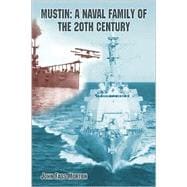| Acknowledgments | ix | ||||
| Introduction | xi | ||||
| PART I. THE AVIATOR | |||||
|
3 | (9) | |||
|
12 | (8) | |||
|
20 | (14) | |||
|
34 | (13) | |||
|
47 | (18) | |||
|
65 | (17) | |||
|
82 | (14) | |||
|
96 | (14) | |||
|
110 | (11) | |||
|
121 | (8) | |||
|
129 | (10) | |||
| PART II THE GUN BOSS | |||||
|
139 | (8) | |||
|
147 | (11) | |||
|
158 | (15) | |||
|
173 | (10) | |||
|
183 | (20) | |||
|
203 | (14) | |||
|
217 | (5) | |||
|
222 | (7) | |||
|
229 | (8) | |||
|
237 | (8) | |||
|
245 | (12) | |||
|
257 | (12) | |||
|
269 | (16) | |||
|
285 | (12) | |||
| PART III. THE SURFACE WARRIORS | |||||
|
297 | (8) | |||
|
305 | (14) | |||
|
319 | (11) | |||
|
330 | (6) | |||
|
336 | (9) | |||
|
345 | (12) | |||
|
357 | (7) | |||
|
364 | (8) | |||
|
372 | (12) | |||
|
384 | (17) | |||
|
401 | (14) | |||
| Appendix | 415 | (12) | |||
| Source Notes | 427 | (10) | |||
| Index | 437 |








